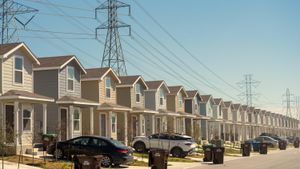A significant shake rattled Southern California when a 5.2-magnitude earthquake struck near Bakersfield earlier this week, shaking nerves and sending aftershocks rippling through the region. Just after 9 PM on Tuesday, the seismic event caught the attention of residents over 100 miles away, reaching locations as far as Los Angeles.
The earthquake's epicenter was located approximately 14 miles southwest of Lamont, California. Following the main quake, the area experienced more than 400 aftershocks within just two days, according to the U.S. Geological Survey (USGS). This flurry of activity included at least 74 smaller earthquakes of magnitude 2.5 and above. It shows how active the tectonic plates beneath California really are.
California seismologists explain the basics of earthquake terminology. The main earthquake is known as the mainshock, any smaller subsequent earthquakes are referred to as aftershocks, and if another larger quake follows soon after, it can act as what is termed a foreshock. Dr. Lucy Jones, a prominent seismologist, emphasized, "Aftershocks represent minor readjustments along the portion of the fault where the mainshock slipped.” Many of the aftershocks were felt throughout Kern, Los Angeles, and Ventura counties, confirming the interconnectedness of California's geological structures.
Interestingly, the threat of additional significant earthquakes has been circulating among locals. Dr. Robert deGroot, also from USGS, noted there’s about an 8% chance Tuesday's quake could act as a foreshock to something larger. Still, he cautioned, “Rather than spending all of our time trying to figure out when the next earthquake is going to happen, what we need to do is prepare for earthquakes we know are going to happen.”
That sentiment echoes the collective thoughts of many residents who routinely prepare for seismic activity. California is known as earthquake country, and every major quake serves as another reminder to be ready for the next round. Dr. Jones suggested there’s roughly a 5% to 10% chance of larger quakes following strong aftershock activity, though it's not guaranteed — aftershocks dominate the statistical output without always indicating another main event.
The aftershocks following the 5.2-magnitude earthquake have been considered quite active. Within the first hour after the main shock, there were at least two aftershocks measuring over 4.0 on the Richter scale. “That’s quite significant activity for such a short timeframe,” Dr. Jones described. This aligns with the historical context of previous California earthquakes, where such heightened aftershock activity can sometimes lead to more substantial events.
Despite the tremors, the area is fortunate so far as there haven't been reports of significant damage or serious injuries attributed to the quake or its aftershocks. Officials remain on alert, monitoring the seismic situation closely. They continue to remind residents how best to respond to potential quake impacts — "drop, cover, and hold on" is the standard response taught during driller drills.
Still, the larger questions remain: Is this swarm of aftershocks leading up to something bigger? And when will the notorious "Big One" hit? Estimates by USGS indicate there is nearly a 51% chance of experiencing significant quakes (magnitude 7 or higher) somewhere along California’s extensive fault lines over the next few decades.
There’s historical context to this nervous anticipation. Notably, many of California’s most significant earthquakes have come after sequences of smaller quakes. For example, the Ridgecrest quake of July 4, 2019, was preceded by foreshocks shortly before the disastrous event of the following day, which measured 7.1.
Those living near seismic zones have learned to adapt and prepare. Emergency kits are standard, with many households keeping essentials like water, food, first aid supplies, and tools on hand. Using apps like MyShake, which delivers early warnings of earthquakes, has also gained popularity among residents aiming to stay one step ahead of nature’s unpredictable whims.
With California’s geological activity always simmering beneath the surface, the sentiments echo: it’s not about if another earthquake will occur, but rather when it will strike. Many locals, such as Ole Kaven from USGS, encourage them to keep earthquake preparedness at the forefront of their minds. “Because of the productive nature of the aftershock sequence, the chance of another shock of 5.0 or greater is slightly elevated, raising eyebrows and concern alike,” Kaven noted.
Residents of earthquake-prone regions know too well of the potential fury of nature's earthquakes, but through preparedness and knowledge, they stand ready. How long they will have to remain vigilant remains anyone's guess.



